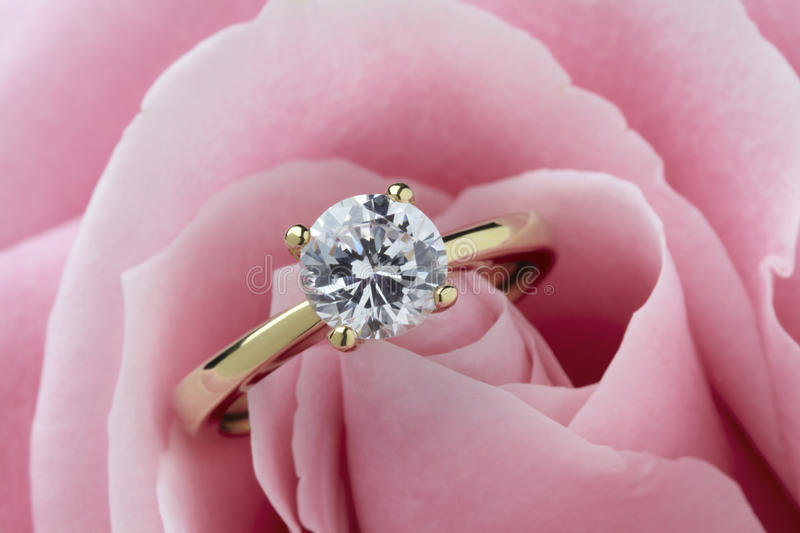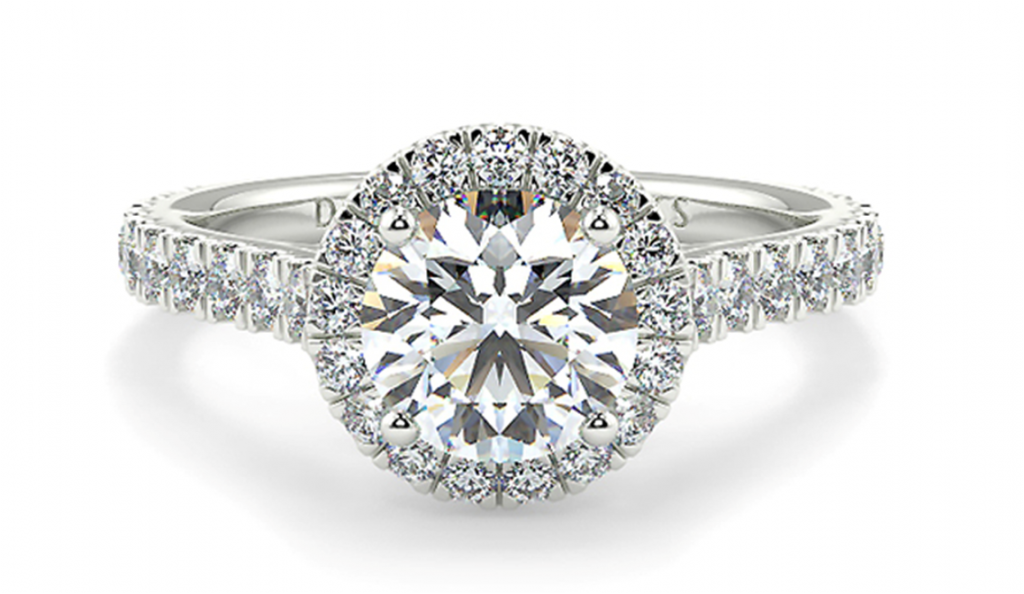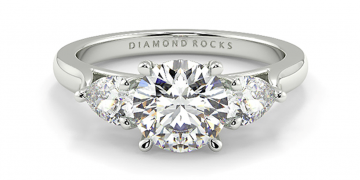How you can create your own engagement ring

By Diamond Rocks
From knowing ring sizes to understanding ‘carats’ and ‘inclusions’, many people feel the pressure when attempting to choose the perfect engagement ring.
Every snippet of research can prompt more questions, and navigating all of the different designs in jewellery shops can be overwhelming at the best of times. There has, however, been a surge in the number of people designing diamond engagement rings. Yet, the process of creating a complete showstopper of a ring — taking into account diamond, ring style and metal — may not be nearly as complicated as you think.

The four Cs of Diamond Quality
As you begin to explore different designs and envisage unique styles and shapes, there are a variety of factors worth considering, especially if you’re looking to design your own diamond engagement ring. The four Cs of diamond quality refer to:
Carat Weight – It’s perhaps the measurement that people are most are familiar with when they begin their journey of creating the perfect engagement ring. Carat refers to the actual weight of the diamond. Naturally, the larger the carat, the more expensive the diamond is likely to be (though this is not always the case). Due to the fact that even a fraction of a carat can make a considerable difference in price, precision is vital. In the diamond industry, weight is often measured to the hundred-thousandths of a carat and rounded to a hundredth of a carat.
Colour Grade – Colours fall under a D-Z scale, with D being completely colourless (and the most expensive) and Z having a yellow hue. It’s important to understand that the shape of the diamond can also influence its position on the colour scale, with round diamonds known to hide colour well, allowing you to move further down the scale without seeing much of a yellow hue coming through.
Clarity Grade – This is where the natural imperfections and ‘inclusions’ are considered. The GIA Clarity Scale contains 11 grades, rating diamonds from Flawless (FL) to Included (I) with the majority of diamonds falling into the VS (very slightly included) or SI (slightly included) categories. When designing your ring, you may not necessarily need to pick a diamond at the very top of the clarity grade to gain a look that’s inclusion-free. What matters is how ‘eye-clean’ the diamond looks, and it can take a very keen eye to spot the difference in a single increment.
Cut Grade – A measurement that’s not influenced by nature. Cut grade refers to how well the stone is faceted, proportioned and polished. This also brings into play the stone’s interaction with light. For example, ‘brilliance’, which is the diamond’s capability of returning light to the eye, is measured solely by cut.
What are the most popular styles being specially designed?
With engagement rings, there has been a shift towards more delicate, classic styles in recent years. Platinum has surpassed gold as the most popular metal, providing a natural gleam that complements diamonds of all shapes, sizes and hues. It’s also very rare and highly durable, keeping your elegant diamond safe and snug for decades, if not centuries, to come.
SOLITAIRE RINGS

Solitaire rings have long been popular, especially among those seeking a simple yet sophisticated style. Former United States President, Barack Obama proposed to his former First Lady, Michelle Obama, with a beautiful round-cut solitaire diamond ring — estimated to be 1-carat — over a romantic candlelit dinner. Oval rings have also been thrust into the spotlight in recent years. Blake Lively’s grandiose oval cut diamond ring (said to be 12 carats in weight) subtlety nods to the Art Deco era, whilst Pixie Lott’s stunning ring design made rounds across social media, featuring an oval cut diamond in a prong setting and a platinum band.
HALO RINGS

The halo style dates back to the Victorian period — when small pearls or diamonds were used to accentuate the (often colourful) centre stones, adding drama and emphasis. A ‘halo setting’ therefore refers to the careful placement of small diamonds set around the centre stone and it helps to elevate the sparkle of the ring. Yet, it means the smaller diamonds need to be perfectly calibrated with the centre stone in terms of cut, clarity and colour to create a consistent appearance.
DIAMOND SHOULDER RINGS

With demand surging for traditional and elegant styling, diamond bands add brilliance — dazzling at every angle. Diamond shoulders are available in a variety of designs including micro, pave and channel set. Made for maximum sparkle, diamonds can be placed onto an 18ct White Gold, 18ct Yellow Gold, 18ct Rose or Platinum band. Channels set rings are the epitome of refined elegance, and this style has been growing in popularity since the early 1990s.
TRILOGY RINGS

The trilogy diamond design symbolises a couple’s past, present and future. As a fine choice for beloved engagement rings, the look has made waves in the jewellery industry in recent years, especially since 2017 when Prince Harry and Meghan Markle became engaged. As is the case with many royal treasures, Meghan’s ring is virtually incalculable in terms of worth, featuring the late Princess Diana’s diamonds as side stones, complementing the centre stone, which is a cushion-cut diamond from Botswana.
























